If the UAV situation doesn't change, we'll be at the negotiating table within a year: FPV drones and their role in warfare

Every so often, a Kyiv tech specialist [in peacetime] with a nom-de-guerre of "Mazhor" ("the Glam Boy" – ed.) heads out to hunt. He gathers a team, loads his drones into the boot of a vehicle, and heads into the combat zone.
He’s not military personnel; he’s more like a freelance hunter. But Mazhor has no trouble reaching the front. The military guys know him and his capabilities.
"He does things that give you goosebumps," says aerial reconnaissance specialist Sergey Gnezdilov, referring to Mazhor.
First, Mazhor surveys the area and shares new information with the brigades there. When he identifies an interesting target, the hunt begins – for Russian military equipment, infantry concentrations, and surveillance systems.
Mazhor’s primary weapon is FPV drones.
FPV stands for First Person View. This name stems from the control principle of the quadcopter. The pilot receives a live video feed from the drone through goggles, allowing for significantly more precise control of the unmanned aircraft.
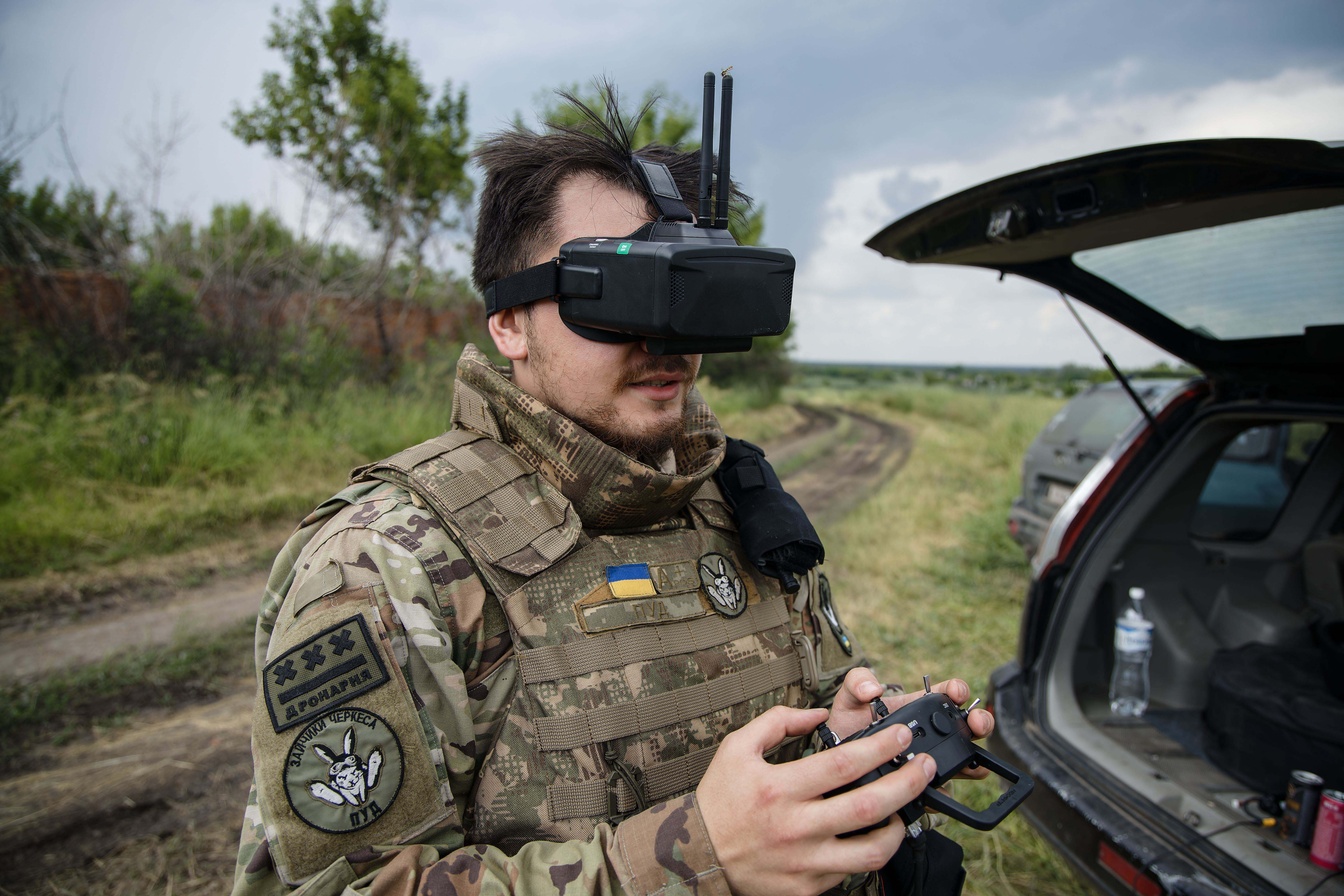
The Ukrainian army only recently started using kamikazes drones, but they’re already gaining increasing importance in the war against Russia. It’s no wonder experts call it the largest drone war in history.
Why are FPV drones necessary, and what sets them apart from other quadcopters? Why are they considered one of the few means of attack that Ukraine does not depend on allies for? This article answers those questions.
Hunting for Russian tanks
"Mazhor" (In Ukraine, "Mazhor" is a common nickname for a person with wealthy relatives or coming from a wealthy background, usually also living a luxurious lifestyle – ed.) got his nom-de-guerre, not because he was wealthy, but because of his firearm.
In February 2022, when he was at a checkpoint on the Kyiv bypass, the territorial defence fighters had 5.45mm calibre rifles, while Mazhor, by chance, got a 7.62mm rifle. His friend Sasha, who was nearby, noticed the superior "toy" and rendered the verdict: "Alright, your nom-de-guerre is going to be Mazhor."
Sasha died in the winter, and in memory of his comrade, Mazhor decided to keep his nom-de-guerre. He continues to go by it, even though he has little money.
And the money wouldn’t hurt, either. Not because FPV drones are expensive. On the contrary, they’re one of the cheapest solutions for aerial attacks.
The price of one FPV drone is, on average, $300-400. But don’t forget that they’re kamikaze drones, otherwise known as suicide drones (There are also multiple-use FPVs which cost around the same as a kamikaze, but the author chose to focus on kamikaze FPVs – ed.), so those three hundred dollars are spent on a single flight.
"We all see those impressive videos of a drone flying and bam! It hits the target. Damn! You’re a skilled pilot if one out of five hits the mark. So the cost of this endeavour – God forbid," says Mazhor, confessing that he hits the target in one out of three cases.
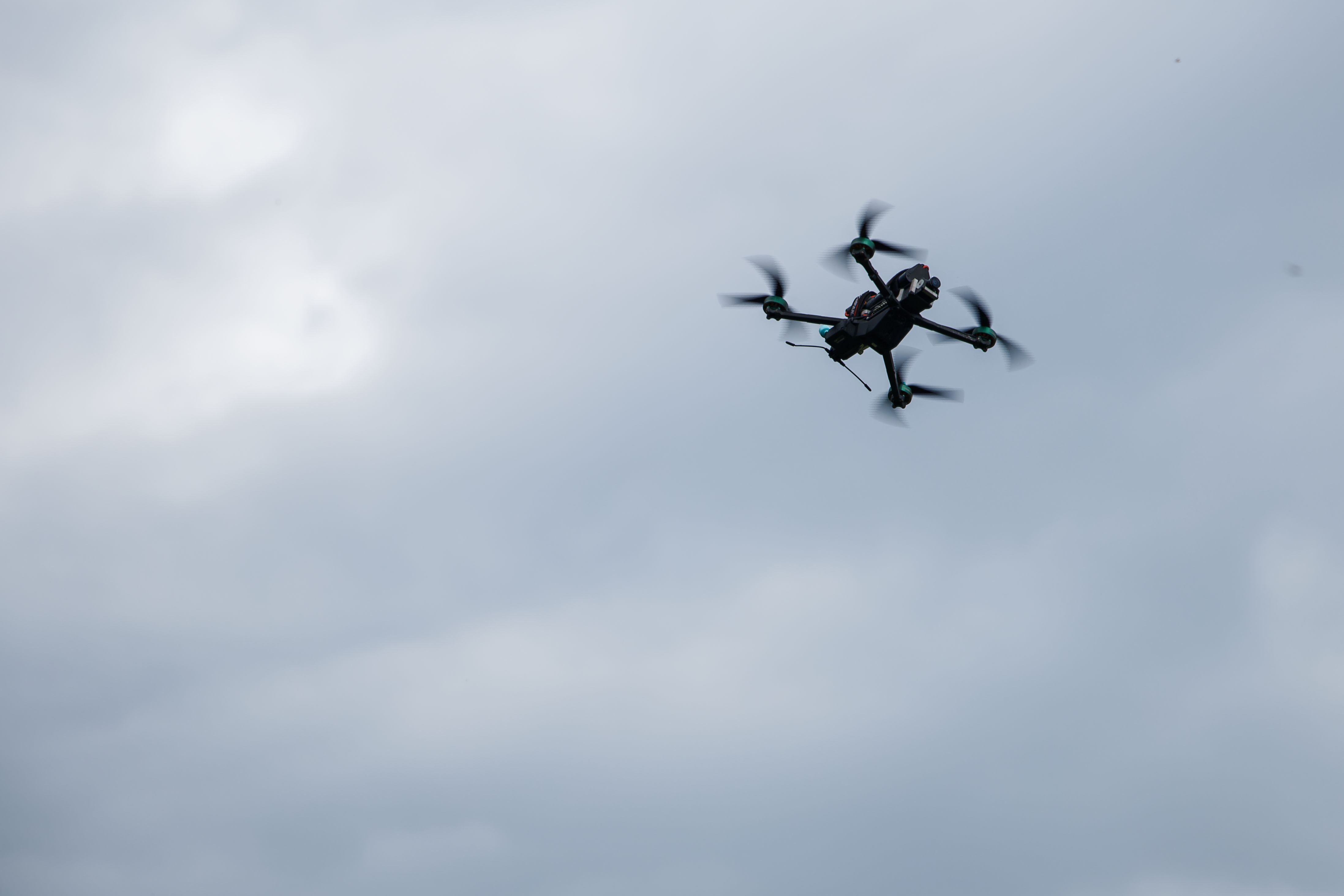
The lenses on FPV drone cameras are typically cheap and unsuitable for detailed terrain exploration. Pilots rely on the data gathered by reconnaissance drones and sometimes ground reconnaissance markers. So, when sending their quadcopter on its final flight, they usually already know what they want to target.
Mazhor launches the drone only when he finds a truly "juicy" target: military equipment, infantry concentrations, and surveillance systems. It’s difficult to hit moving vehicles with artillery, infantry can disperse before a slower drone reaches them, and it’s challenging to destroy a surveillance camera on a thin pole using ammunition, even when dropped from a UAV. It’s much easier to crash into the camera.
Among the forms of warfare mentioned, the average civilian shows the least understanding of cameras. The Russian long-range video surveillance system Murom-M can detect a person at a distance of up to 10 km during the day and up to 4 km at night via its thermal camera.
It can be programmed with 30 points to monitor continuously, 24/7. When it detects an interesting object, it transmits the coordinates to the military, who can immediately open fire on the sector.
Mazhor recalls an operation in the Luhansk region. The Russians installed a camera on a telephone tower in one of the villages, monitoring from a strategically important height. When Ukrainian soldiers entered the area, the occupiers could see where their targets were and adjusted their fire accordingly.
Destroying the metal structure of the tower was challenging. That’s when Mazhor’s team came to the rescue. They found a convenient launching position, and within a few minutes the kamikaze drone had destroyed the Russian camera.
When discussing the effectiveness of FPV drones, people often use another comparison – a "bird" worth $300 can damage a tank worth several million dollars.
"If you hit the back compartment of the engine correctly, there's a 70% chance it will ignite," says a military drone pilot with the call sign "DJ," specializing in FPV. "For example, a tank comes out, it’s in action, and you fly towards it. You can at least hit the tracks, causing them to come off, and that’s it – the tank is immobilized, and now it can be finished off by artillery. Alternatively, you can launch another drone for the task."
Service person DJ hasn’t actually taken down tanks yet, but he has successfully targeted APCs.
Moreover, on YouTube, plenty of videos show quadcopter kamikazes chasing tanks. And among military personnel, there are many stories about cases where, in a particular combat zone, drones burnt down 40 enemy armoured vehicles in a month.
Source: Official YouTube channel of the Security Service of Ukraine
Other interesting targets for an FPV drone pilot are surveillance posts, anti-tank missile systems, tripod-mounted grenade launchers, and large-calibre machine guns. They can even infiltrate bunkers, which isn’t possible with a regular projectile.
Although an FPV drone is essentially a projectile, it is a guided one.
Another essential difference from the [DJI] "Mavic 3," which has already become "the classic" of the Ukrainian battlefield, is that the FPV drone is three times faster. This crewless aircraft effortlessly reaches speeds of up to 160 kilometres per hour. Depending on the amount of explosives installed on board, the speed may decrease, but it remains incredibly high.
Due to the enhanced speed and manoeuvrability, pilots control the drones using goggles, providing maximum immersion in the combat scene. However, the goggles prevent a pilot from seeing their immediate surroundings. That’s why a pilot usually needs a partner to ensure their safety.
In addition to simple cameras, FPV drones have weak batteries that only last a few minutes of flight. However, it is sufficient to reach the target. These quadcopters have another significant advantage over the Mavic 3. They are much more resistant to electronic warfare.
FPV drones use an analog video transmission system. Jamming this system is much more challenging, but the enemy can intercept the signal and see the same image as the operator. The intercept would pose a danger if the drone were to return to the pilot and expose the positions of Ukrainian fighters.
However, for this type of drone, it is a one-way journey.
"Mavic is already a classic. It is quite expensive, but it is a versatile drone designed to return," says aerial reconnaissance specialist Hnezdilov, who, given the chance, would erect a monument to the Mavic 3. "As for FPV... If we compare it to motorcycles, it would be like an amateur enduro bike that enthusiasts have assembled, and now they ride and show off their skills."
Where FPV drones are manufactured
Every day in dozens of Ukrainian garages, perhaps even hundreds, people are hammering, soldering, and adjusting the equipment. There are hundreds of people. They work both weekdays and weekends, all producing FPV drones.
To be more precise, it is not so much "production." Rather, it’s the assembly of the components, which are ordered separately. And the term "garage" is a general name used for small enterprises, a tribute to the times when craftsmen worked in garages. Nowadays, it is often not an actual garage but rather a house, office, former warehouse, or even a bunker.
FPV quadcopters are not complex devices: once you get used to them, you can assemble one in an evening.
"This field has evolved into a business. Right now, people are making big bucks from it in Ukraine," assures Mazhor. In his understanding, it’s a way to make money during the war.
From the manufacturers’ perspective, it is a business that saves the lives of Ukrainian soldiers.
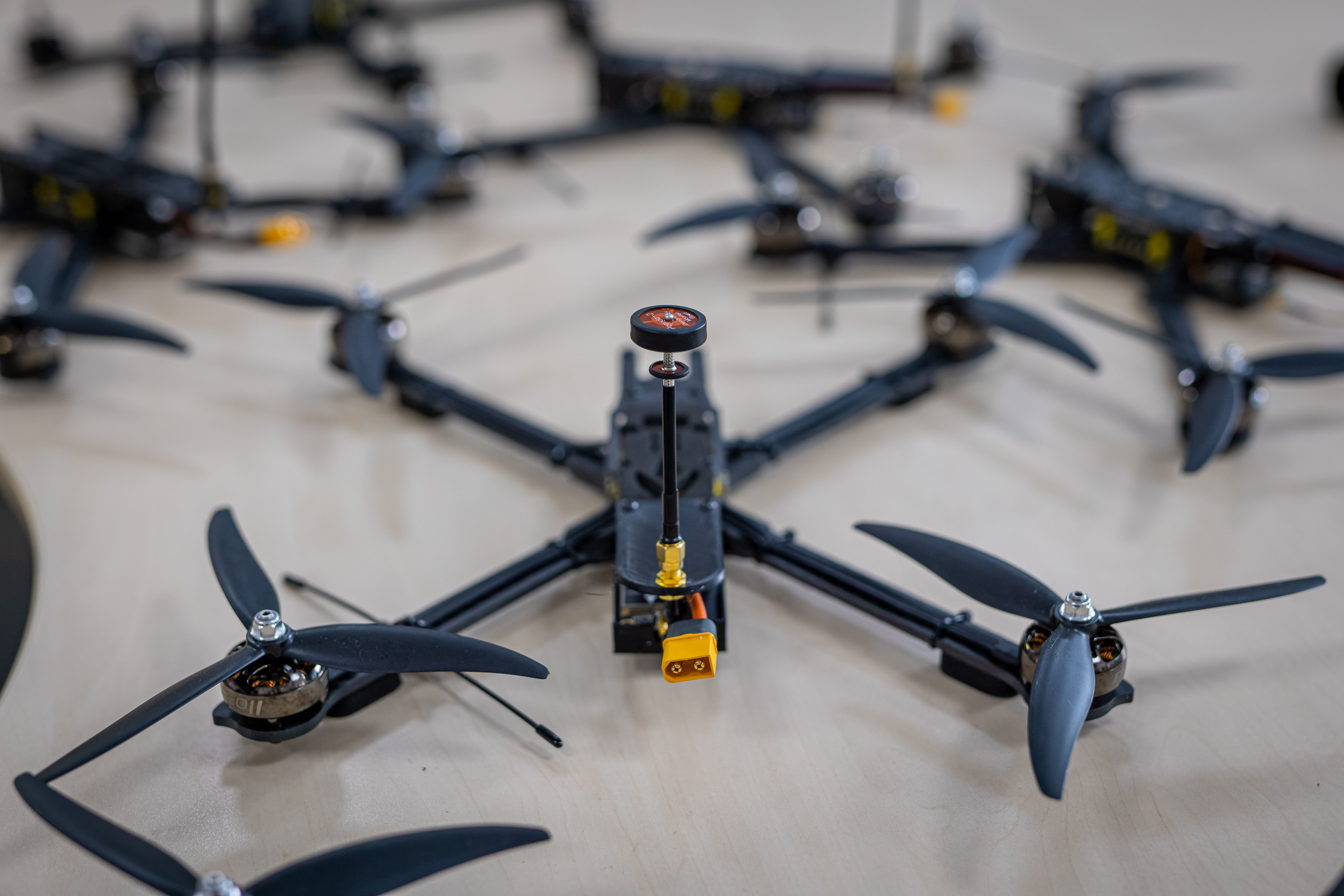
"If the procurement system works perfectly, the cost of components for an FPV drone will amount to $230–250," according to Oleksiy Babenko, the manager of the Ukrainian company named Vyriy, which develops and manufactures drones.
However, in real life, companies buy everything they can get their hands on, which increases the product’s cost.
"Currently, the production cost of a drone is $370–380, and we add $50 on the top (it’s a margin – ed.)," Mr. Babenko reveals the figures. For comparison, if you were to buy a Mavic 3 for combat use, you would need to set aside a budget six times greater.
"However, there are also cases when we hand out the drones, and purely in terms of components, without including the cost of the assembly or shop rental expenses, they end up costing us more than what we sold them for."
Another manufacturer admits to Ukrainska Pravda that their company adds a 30% markup to the cost price of the drone. Simple components, such as frames for unmanned aircraft, are manufactured in Ukraine. However, more complex items, like cameras or motors, must be purchased abroad, often from China.
In the latter case, it becomes a competition for components. The Chinese suppliers have a more powerful customer in Russia, which orders in large quantities, thus becoming a priority buyer.
One of the manufacturers tells Ukrainska Pravda that upon learning that he is from Ukraine, a Chinese seller apologized and refused to sell the already reserved goods. Sometimes acquiring all the necessary components requires money, tricks, and clever tactics.
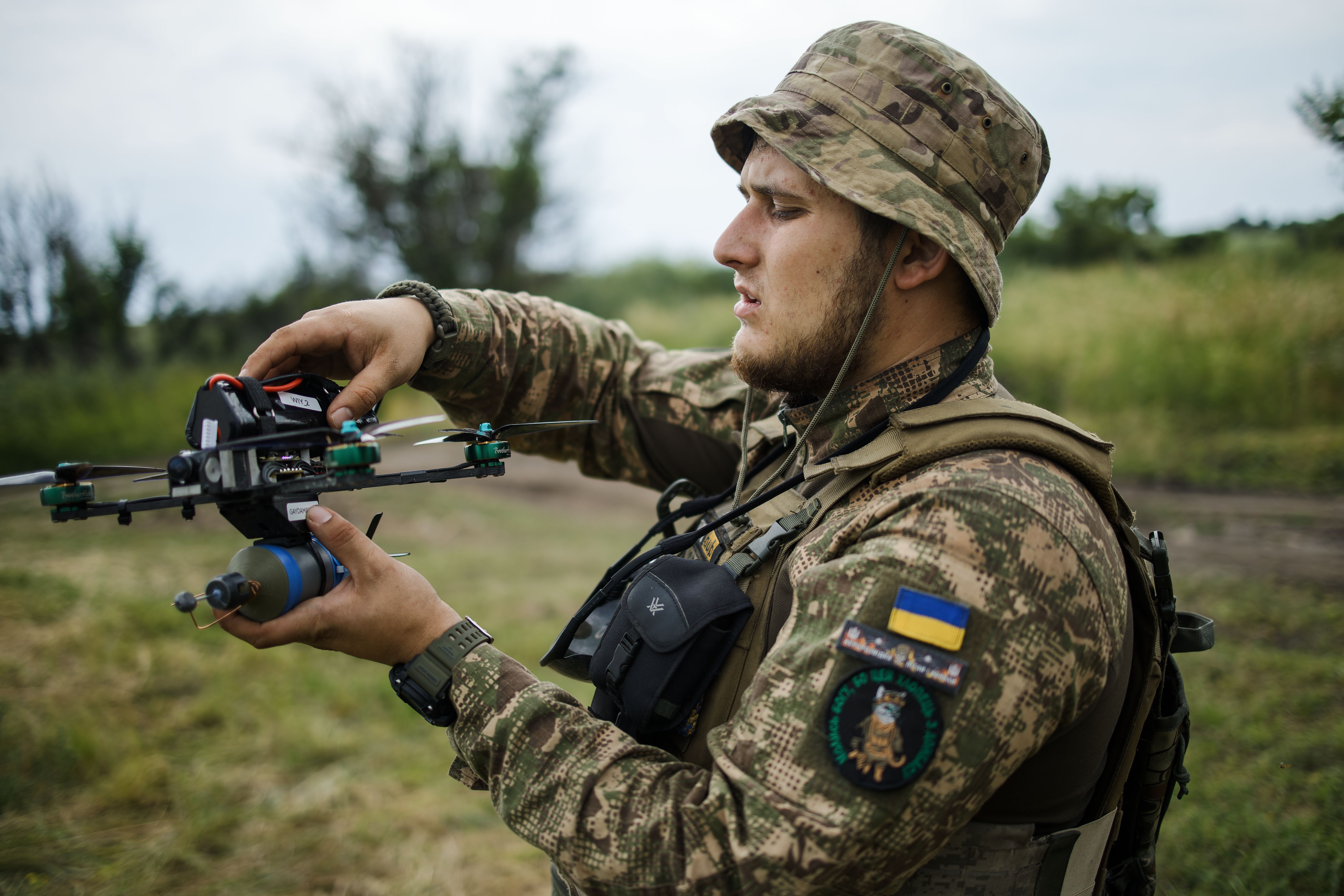
It is not always profitable for Ukrainian companies to manufacture components. The government has abolished customs duties and VAT for various components needed for drone production. However, there is a catch. If the same components are manufactured in Ukraine, raw materials still need to be imported, and customs duties are not waived in this case. Therefore, the price of components from a Ukrainian manufacturer may be higher than from a foreign one.
"We have a lot of small companies that don’t scale up. Scaling up is not profitable in Ukraine. There have been weeks when I spent fifty percent of my time not on production, development, or field tests (testing drones on test sites – ed.) but on going to banks and tax offices, proving that I'm not an idiot and that I make drones in Ukraine," laments Babenko.
"Whoever has more drones will win"
The Director of the Centre for Aerial Reconnaissance, better known to the public as the Victory Drones project, Maria Berlinska is a woman of remarkable courage. In a society where victory in the war with Russia is considered an undeniable fact, and the debate revolves only around the timing of returning state borders, she is not afraid to speak about Ukraine’s possible defeat. And the reason behind this forecast is drones.
Totalitarian states lack imagination. That is why the current war is characterised by Ukrainians inventing something new in the fight against the aggressor, outpacing Russia. The same happened with kamikaze drones.
However, as the months pass, Russian forces have started adopting Ukrainian tactics. Once they see that a tactic is effective, they focus their resources on it and end up ahead.
The same happened with kamikaze drones.
According to Berlinska’s estimates, Ukrainian manufacturers currently fall short of producing 10,000 quality FPV drones per month.
Meanwhile, the Russians have already reach a monthly output of 45,000-50,000 drones.
How many drones do the Ukrainian defence forces need? "How many lives do we want to save?" is Berlinska’s response to this question.
Source: YouTube of the State Security Service of Ukraine
The calculation is simple. Imagine a situation where soldiers from two armies are entrenched in two nearby trenches. One option is to send soldiers to storm the enemy, risking heavy casualties from machine gun fire as they cross the field. Another option is to launch an FPV drone for reconnaissance before the attack, clearing the way and saving a significant number of lives for just $400.
Alternatively, during a defensive operation, drones can be used to target the enemy’s personnel, surveillance systems, and combat vehicles, thereby saving the lives of soldiers in the trenches.
– In this war, the side with more diverse types and classes of attack UAVs will emerge victorious. It doesn't matter how much ground equipment or assistance our Western partners provide. Tanks, which take months to manufacture and cost millions of dollars, can be destroyed by a drone worth a few hundred bucks within seconds. Period. That’s why drones are a game changer in this war, the decisive factor in who achieves victory," asserts Berlinska.
In April, Putin stated that the production of UAVs in Russia should be fast tracked. Andrey Belousov, the First Deputy Prime Minister of the Russian Federation, outlined the scale of this initiative. The volume of state orders for UAV production is expected to reach around 92 billion roubles ($1 billion) from 2024 to 2026, and by 2030, it is projected to reach 200 billion roubles ($2.2 billion).
By October of this year, Russian regions were tasked with developing and approving UAV development programs. In the Moscow region, a training program for instructors operating combat FPV drones was launched in May. Even in the occupied Ukrainian territory of Zaporizhzhia Oblast, there have been reports of drone assembly, as stated by local collaborator Volodymyr Rohov:
– Russia indeed invests significant funds in this area. They import truckloads of components from China and simply hand them over to engineers, saying, "Start assembling!" Russia has quickly developed standardized ammunition for UAVs. Russian military personnel don’t need to assemble the ammunition themselves; they take it out of the box, attach it, and fly, says Lyubov Shipovych, the founder of the charitable foundation Dignitas Fund.
We talk to her at one of their enterprises. They are assembling a batch of 30 FPV drones that Shipovych will take to the front lines tomorrow. Eight hundred drones have been contracted from manufacturers, and 150 have already been delivered to soldiers.
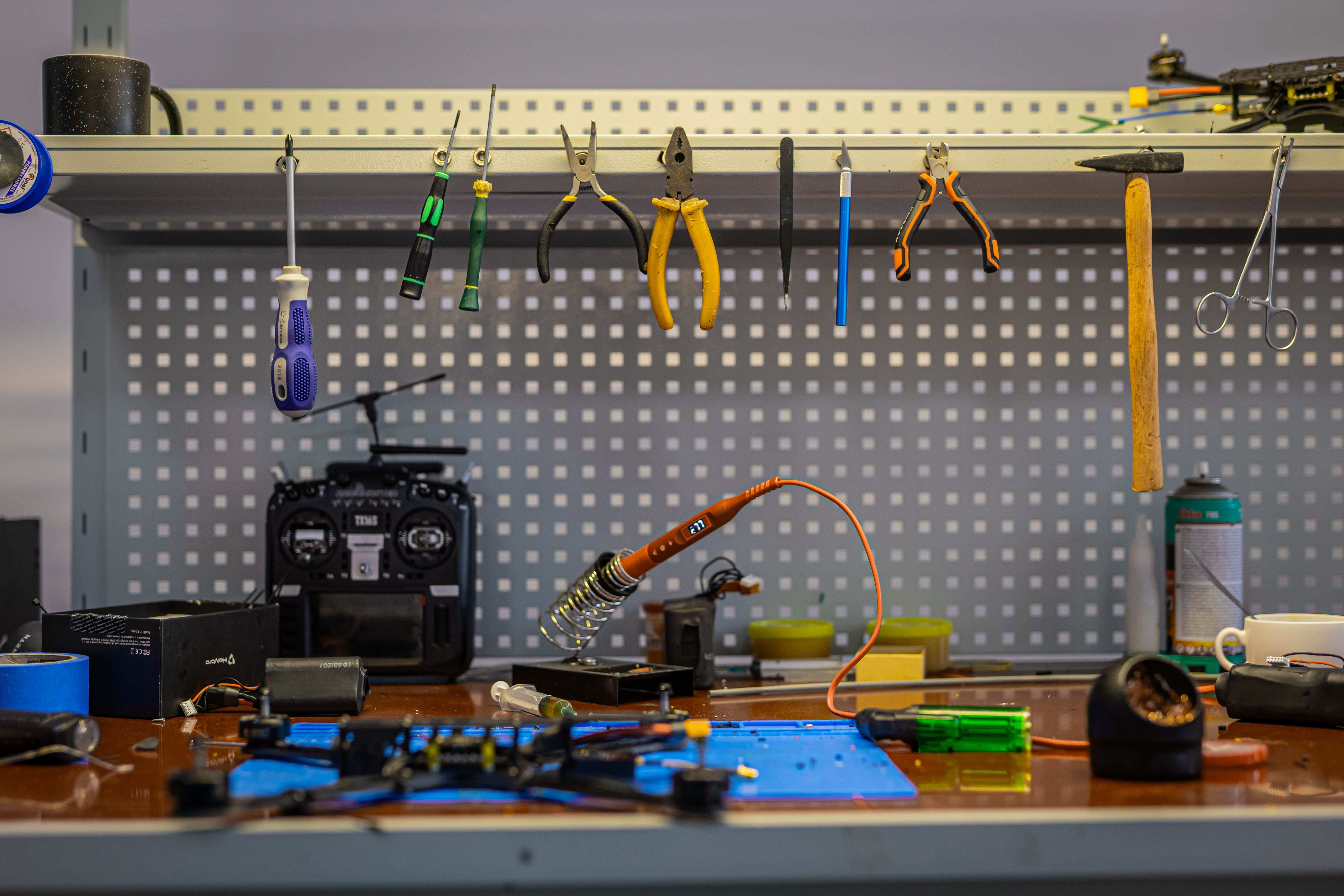
– The Ministry of Defence does not procure FPV drones. Fortunately, we have the Ministry of Digital Transformation, which partially substitutes for the Ministry of Defence. It purchases FPV drones as part of the Army of Drones project. It helps manufacturers obtain the operation permit (which allows them to purchase a specific type of UAV from the company officially – ed.). However, even to obtain this permit, some manufacturers undergo an approval process that takes up to three months.
One of the manufacturers who obtained the operational permit measures the number of filled documents not by copies but by kilograms. And he shares the most memorable question he encountered while filling out the paperwork: "the engine size in cubic centimetres" in a battery-powered electric drone.
In Maria Berlinska's view, people like this manufacturer are key figures in the country today. Not the president, ministers, or even the soldiers on the front line, but the engineers. Because they are the ones who can propose solutions that will save the lives of tens of thousands of people.
"The way I see it, the Ministry of Defence gives very little attention to what is happening in robotic unmanned technologies. There is no state policy at all," says Berlinska. "And the Ministry of Defence should come forward and say that this is our top priority, that we understand that this is the only thing that Ukraine can influence."
Let's be honest: what can we really influence? Can we buy HIMARS or F-16s for ourselves? Can we influence the number of Humvees that will be provided to us, or the number of anti-tank missile complexes? No, all we can do is plead for them. Currently, Ukraine’s only contribution to the war effort is people in uniforms. In reality, that’s about it."
According to Ms. Berlinska’s opinion, the state should take on the function of importing components for drones, thereby allowing engineers to focus on their tech tasks.
"What do we need to do? We need to have this issue under the personal control of the President. Beyond that, I do not have further suggestions. What else is there to do? Maybe seek solace and prayer in a church, hoping for divine intervention and guidance.
Losing time means losing the only irreplaceable resource we have – our people. After losing people, we cannot continue the war. If we do not approach this [war] from a technological standpoint, we are heading towards defeat, which may be labelled as a ceasefire.
I want to be mistaken, but I believe that at this rate, we will have to sit down at the negotiating table within a year."
***
As long as the state doesn’t pay due attention to drones, the primary suppliers of drones for the Ukrainian army are volunteers and charitable foundations.
But it’s not just that. Soldiers purchase drones with their own salaries, farmers chip in for UAVs for their fellow fighters, and former employers order copters for service personnel who used to be their work buddies not much more than a year prior.
Whenever he has the opportunity, the fighter DJ assembles FPV drones himself. He invests around 12,000-15,000 hryvnias ($300-400) of his own money monthly (the current salary of service personnel is approximately $800-900 for those working in the rear units and $2500-3500 for those fighting the enemy in direct day-to-day combat – ed.)
"When your unit is on the frontline, during an assault we might have two cases of "cargo-200" [casualty by death] who didn’t make it past a machine gun point, and a bunch of "cargo-300"s [casualty by injury]. It’s better to spend that 15,000 hryvnias on a drone, he says (Ukraine still uses Soviet codes for classifying casualties: Cargo 200 stands for "irrecoverable losses" (i.e., soldiers killed in action), while Cargo 300 is a code for the wounded soldiers – ed.)
On the eve of the publication of this article, DJ came under artillery fire. He was injured, and the ground control station for FPV drones was destroyed. Now the unit is fundraising for a replacement.
And in the meantime, if they are ordered to launch an assault, the soldiers must rely solely on their own resources.
Rustem Khalilov, UP
Translators: Natasha Mueller and Block(chain) (nom-de-guerre – ed.),VD-Translations team
Editor: Bea Barnes